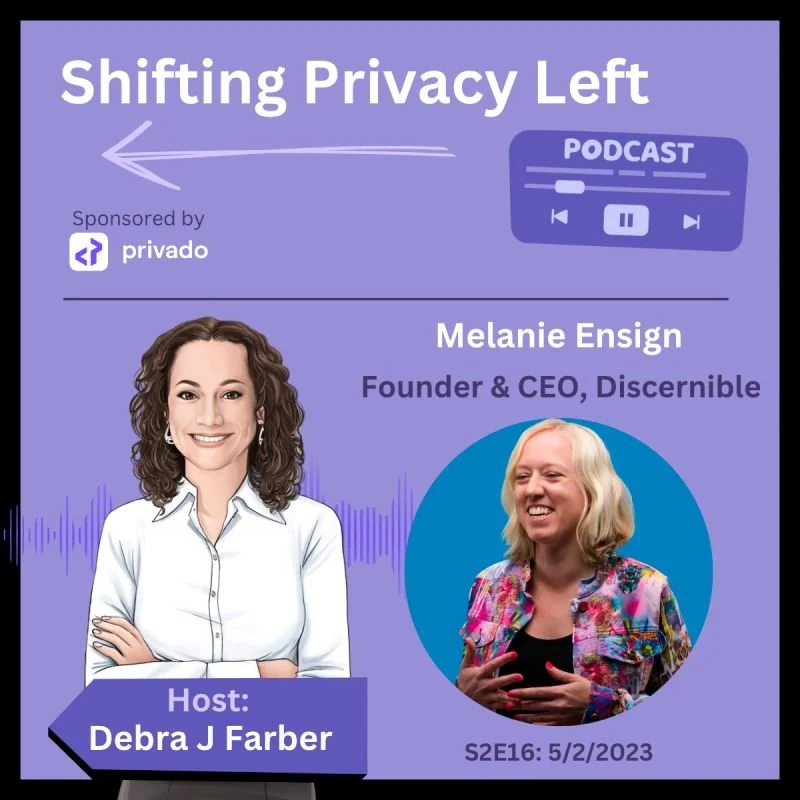CEO Interview: “Words with Impact: Communication Tips for Privacy Technologists”
An interview with Discernible CEO Melanie Ensign and the Shifting Privacy Left Podcast
I recently had the pleasure of speaking with Debra Farber on the Shifting Privacy Left Podcast to share some of my experiences as a communications strategist working with privacy engineering teams.
[Disclosure: I’m blessed to consider Debra a good friend and we serve together as advisors to The Rise of Privacy Tech.]
We covered a lot of ground in less than an hour, including how to use technical communication strategies to earn trust with external stakeholders. I’m digging deeper into that topic here.
Earning Trust Through Technical Communications
During my conversation with Debra, I touched on the prerequisite of authenticity for effective communication. While interviewing for my former role as head of security, privacy, and engineering communications at Uber, I reminded one of the panelists (with whom I had worked with previously at another company) that my approach had not changed — my priority would be to help the team become the organization it aspired to be so that our external messaging and engagements accurately reflected what we wanted to be known for.
I’ve never been the right person to call for organizations hoping to spin or mislead public perception, and I built Discernible on the principles of telling the truth, proving it with action, and realizing that the true character of an enterprise is expressed by its people. A prospect once told me they were comfortable operating in the gray because of their experience in PsyOps for the US federal government. I made it clear that I was not comfortable operating in the gray, not only because of my personal values but because buried bodies are a costly tax on public trust.
Every privacy organization experiences bumps in the road, and before we can expect to receive the benefit of the doubt for honest mistakes or unforeseen challenges, we need to introduce our stakeholders to our commitments and capabilities. If your stakeholders don’t already believe privacy is a priority for your business, you’ll face a steep uphill battle to convince them during an incident. I outline the reasons why in this previous post and tips for how to avoid privacy outrage here.
“The job is not to tell a story to get people to believe something. The job is to get the enterprise to be worthy of trust in everything that it does...helping the enterprise define itself and become authentically who it aspires to be so that the story you tell about it is accurate.” - Roger Bolton, President of the Arthur W. Page Society
Way back in 2009, Marc Andreesen predicted that software would eat the world. Now in 2023, there are few organizations without technical dependencies and investments, including how they protect corporate assets and treat personal information. Learning how to effectively articulate those programs proactively is critical to not only becoming the enterprise you aspire to be through partnership with cross-functional teams, but also to ensure that the stories you tell externally are accurate, enabling your stakeholders to consider giving you benefit of the doubt when you need it. That’s trust.
If you’re ready to start or improve using technical communications to establish, nurture, and measure trust in your privacy program, send us a note!

